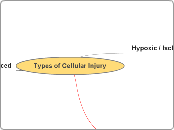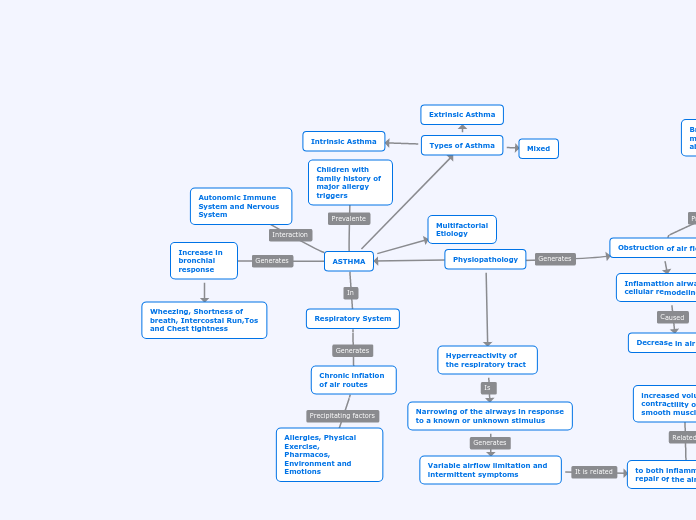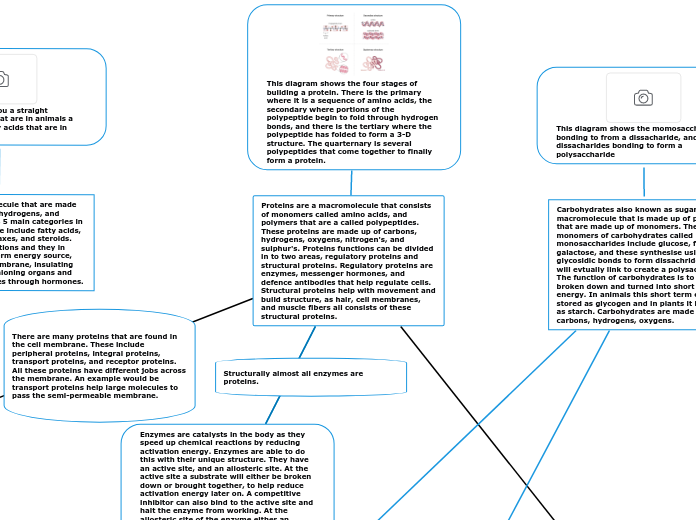もっと見る
Membranes, Energy, and Cell Communication
Maya J Reedにより
ASTHMA 2
Fabiola Aguilar Jimenezにより
In glycolysis and enzyme one molecule of glucose is broken into two molecules of pyruvate.
Moses Aidooにより
Proteins are a macromolecule that consists of monomers called amino acids, and polymers that are a called polypeptides. These proteins are made up of carbons, hydrogens, oxygens, nitrogen's, and sulphur's. Proteins functions can be divided in to two areas, regulatory proteins and structural proteins. Regulatory proteins are enzymes, messenger hormones, and defence antibodies that help regulate cells. Structural proteins help with movement and build structure, as hair, cell membranes, and muscle fibers all consists of these structural proteins.
Brian Parkにより
Types of Cellular Injury
Chemical Injury
Paracetamol
Converted by Cyt P450 to highly toxic Metabolite
Carbon Tetrachloride
Converted by Cyt P450 to highly reactive Free radical
Induce Cell injury by 2 mechanisms
2) Not biologically active but can be converted into toxic metabolites
1) Directly by combining with critical molecular component or organelle
Free Radical Induced
Mechanism Of Injury
Integrity of Genetic Apparatus
DNA damage
Reaction with thymine causes single stranded breaks
Protein Synth and Function
Oxidative Metab of Enzymes
Degredation of enzymes by proteasome complex
Disrupts enzyme activity
Formation of Protein-Protein Cross Links
Peroxidation of Membrane lipids
More FR generated causing autocatalytic chain rxn propagation
FR reacts with unsaturated fatty acids
Free Radicals Generated by:
Nitric Oxide
Oxidation/Reduction of transition metals
Enzymatic metabolism of exogenous chemicals/drugs
Radiant Energy
X-Rays
UV light
Free radicles produces by Ox-Phos in the mitochondria
Free Radical Removal Mechanisms
Scavenging Systems
Glutathione Peroxidase
Superoxide Dismutase
Catalase
Protein Binding
Lactoferrin
Ferritin
Transferrin
Antioxidants
Examples
Glutathione
Ascorbic Acid
Vitamin E
Block initiation/activation of Free Radicals
Hypoxic / Ischemic Injury
Ischemia / Reperfusion Injury
Mechanisms
Production of cytokines and adhesion molecules
Additional injury due to inflamation
Increased generation of ROS
Inability to neutralize ROS due to injury
New cell damage that occurs after blood flow is restored
Irreversible
Characterised by:
2) Profound disturbances in membrane function
Generation of free radicals
Loss of intracellular amino acids
Loss of membrane phospholipds
1) Inability to reverse mitochondrial dysfunction
Membrane Permeability transition
Marked reduction of ATP production
Persistence of ischemia leads to further deterioration
Reversible
ATP depletion
Causing damage to:
Protein Synthesis and Function
Disruption of protein synthesis
Dissociation of polysomes to monosomes
Detachment of ribosomes from ER
Aerobic Respiration
Cellular metabolism altered
Reduction of intracellular pH
Accumulation of lactic acid and inorganic phosphorus
Increased rate of anaerobic glycolysis
Integrity of Cell Membranes
Reduced activity of Na+/K+ pumps
Cell swelling and dilation of ER
Net gain of solute
Main mechanism of cellular injury









